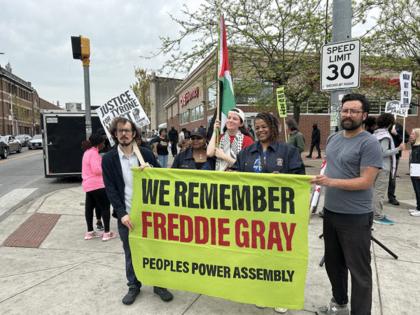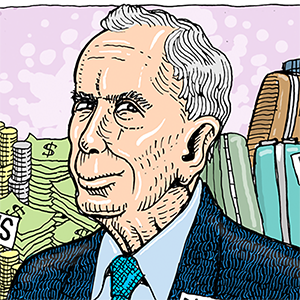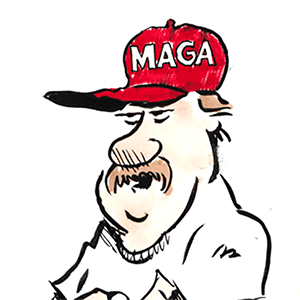10 years after Freddie Gray's death, Baltimore reflects and pushes for equity
Published in News & Features
BALTIMORE — The Baltimore community gathered Saturday morning at the spot where Freddie Gray was arrested in 2015 to commemorate the 10th anniversary of his death in police custody.
A few hours later and several blocks away, activists held a rally calling for social justice as they marched from Penn-North Metro to Mondawmin Metro.
A decade ago, Freddie Gray died at Maryland Shock Trauma from a spinal injury one week after he was injured riding inside a Baltimore City police van when he was 25 years old. In the weeks following his death, Baltimore was engulfed in protests focused on the systemic inequities that marked Gray’s life.
Mayor Brandon M. Scott laid a wreath at a mural honoring Freddie Gray, about a block from where he was arrested in the 1700 block of North Mount Avenue and Presbury Street. Scott was joined by attorney William H. “Billy” Murphy, Jr. and Freddie Gray’s twin sister, Fredricka Gray, to memorialize his death.
“We all know that 10 years ago that Baltimore, starting with the death of young Freddie Gray, went through what we call a kairos moment,” Scott said. “And today we are here at the request of the family who wish to lay a wreath … to really honor their beloved son, brother, cousin. That’s why we are here today.”
Fredricka Gray wore a sweatshirt emblazoned with a photo of her brother. She was born 14 minutes after Freddie Gray.
“I want to say thank you to all y’all who supported us and been with us through the whole process,” Fredricka Gray said. “It’s still justice for Freddie Gray, 10 years now.”
Murphy represented Freddie Gray’s family in a lawsuit against Baltimore City, eventually agreeing to a $6.4 million settlement. Murphy said the Baltimore community needs to keep moving forward for social equity, but he has confidence in the current leadership of the city and state.
“We are happy that the mayor is placing a wreath at the mural depicting Freddie,” Murphy said. “The mural when everybody looks at it gets inspired. The mural that reminds us what happened on that fateful day. There’s so much that happened as a result of Freddie’s death, and much of it good, a lot bad.
“We have to work harder each and every day to make sure that the dream that arose from Freddie’s death one day comes true — better housing, better food, better health care.”
Scott said the city is still striving to make improvements in the reduction of crime and the relationship between police and residents.
“We all know that we are not the perfect Baltimore that we all want to be,” Scott said. “We doubled down on what we want to be after 2015 and the unrest that followed Freddie’s death. Yes, we are better and we will continue to get better each and every day and every way, whether that is here in Sandtown, across town in East Baltimore and all over West Baltimore. We will continue to work that way.”
Jaselle Coates has lived on the corner of Presbury and North Mount Avenue for 25 years. A Freddie Gray mural with Martin Luther King and Thurgood Marshall is painted on her side wall. She watched landscapers work on a nearby grass-filled lot and shook her head.
“I haven’t seen this many city workers since I lived here,” said Coates, who also grew up in West Baltimore. “Not much has changed since Freddie Gray. They say the murder rate has gone down, but it hasn’t gone down.”
A few hours after the wreath laying, non-profit advocate Peoples Power Assembly held a rally called “Honor Freddie Gray & The Struggle Against Police Terror.” Activists marched from Penn-North Metro to Mondawmin Metro.
Participants largely agreed that the city has a long way to go to improve policing and public safety issues. Some said things have gotten worse in the past decade.
Joyce, 62, is originally from the Penn-North area and now lives in East Baltimore. She’s been sober for 24 years after struggling with drug addiction, but believes “absolutely zero” progress has been made in addressing the danger posed by addicts in her native neighborhood.
“What they need to do is take that opioid money that they got and put it in this area, saturate this area,” Joyce told The Sun. “We have a lot of good people, intelligent, articulate folk up here. They’re just hanging around here because they are addicted to fentanyl and other drugs.”
Charles County native Apryle Bennett, 24, attended Loyola University of Maryland and said she noticed an increasingly heavy police presence in the areas near campus, but doesn’t feel that presence helped address core issues like public mistrust.
“Off of the campus, you just felt like people were caged in. They just felt very uncomfortable,” Bennett said. “Anywhere you go, there’s a lot of police, but people don’t really feel protected and safe because of intense questions they ask like, ‘Where are you going?’ ‘What are you doing?'”
Dejan Ernestel, in his 50s from the Belvedere Square area, said the extent to which policing in the city has improved “depends where you are.” He explained the Peoples Power Assembly’s strategy to move public funds away from policing to foster civic engagement.
“Instead of investing in police, we would invest more into the social services,” Ernestel said. “The importance of community control is people who are living in these neighborhoods can feel [like] part of the community.”
After Gray’s death, the city, the U.S. Department of Justice and the Baltimore Police Department entered into the consent decree after a DOJ investigation determined that years of “systemic deficiencies” at the department drove police to engage in unconstitutional practices, like using excessive force, retaliating against people engaged in free speech and unfairly policing Black Baltimoreans, including Gray.
The consent decree required Baltimore police to overhaul its transportation policies, including implementing extensive training and upgrading its vehicle equipment maintenance.
On Thursday, a federal judge terminated two sections of the consent decree governing the Baltimore Police Department, the first time sections of the 17-section agreement have been declared fulfilled.
Judge James K. Bredar ruled the police department has met the consent decree’s requirements and sustained its progress in the way the department transports people in custody, and how it provides police officer assistance and mental health support.
“The Baltimore Police Department has improved tremendously since 2015 and we will continue to do that,” Scott said Saturday.
———
(Sun reporter Racquel Bazos contributed to this report.)
———
©2025 Baltimore Sun. Visit baltimoresun.com. Distributed by Tribune Content Agency, LLC.







Comments